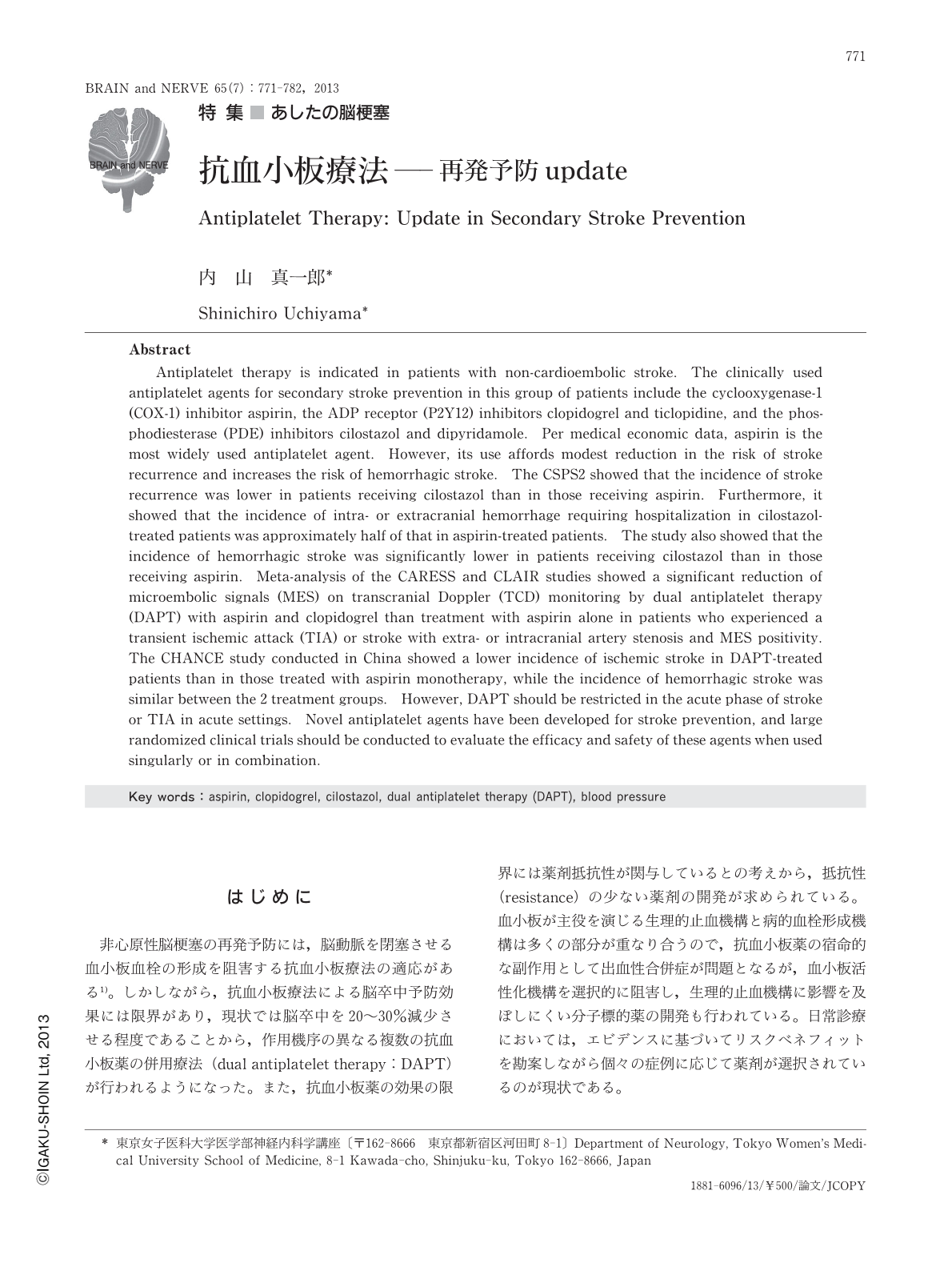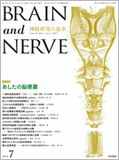Japanese
English
- 有料閲覧
- Abstract 文献概要
- 1ページ目 Look Inside
- 参考文献 Reference
はじめに
非心原性脳梗塞の再発予防には,脳動脈を閉塞させる血小板血栓の形成を阻害する抗血小板療法の適応がある1)。しかしながら,抗血小板療法による脳卒中予防効果には限界があり,現状では脳卒中を20~30%減少させる程度であることから,作用機序の異なる複数の抗血小板薬の併用療法(dual antiplatelet therapy:DAPT)が行われるようになった。また,抗血小板薬の効果の限界には薬剤抵抗性が関与しているとの考えから,抵抗性(resistance)の少ない薬剤の開発が求められている。血小板が主役を演じる生理的止血機構と病的血栓形成機構は多くの部分が重なり合うので,抗血小板薬の宿命的な副作用として出血性合併症が問題となるが,血小板活性化機構を選択的に阻害し,生理的止血機構に影響を及ぼしにくい分子標的薬の開発も行われている。日常診療においては,エビデンスに基づいてリスクベネフィットを勘案しながら個々の症例に応じて薬剤が選択されているのが現状である。
本稿では,脳梗塞再発予防における,これらのトピックに関して最新の情報をエビデンスに基づき概説する。
Abstract
Antiplatelet therapy is indicated in patients with non-cardioembolic stroke. The clinically used antiplatelet agents for secondary stroke prevention in this group of patients include the cyclooxygenase-1 (COX-1) inhibitor aspirin, the ADP receptor (P2Y12) inhibitors clopidogrel and ticlopidine, and the phosphodiesterase (PDE) inhibitors cilostazol and dipyridamole. Per medical economic data, aspirin is the most widely used antiplatelet agent. However, its use affords modest reduction in the risk of stroke recurrence and increases the risk of hemorrhagic stroke. The CSPS2 showed that the incidence of stroke recurrence was lower in patients receiving cilostazol than in those receiving aspirin. Furthermore, it showed that the incidence of intra- or extracranial hemorrhage requiring hospitalization in cilostazol-treated patients was approximately half of that in aspirin-treated patients. The study also showed that the incidence of hemorrhagic stroke was significantly lower in patients receiving cilostazol than in those receiving aspirin. Meta-analysis of the CARESS and CLAIR studies showed a significant reduction of microembolic signals (MES) on transcranial Doppler (TCD) monitoring by dual antiplatelet therapy (DAPT) with aspirin and clopidogrel than treatment with aspirin alone in patients who experienced a transient ischemic attack (TIA) or stroke with extra- or intracranial artery stenosis and MES positivity. The CHANCE study conducted in China showed a lower incidence of ischemic stroke in DAPT-treated patients than in those treated with aspirin monotherapy, while the incidence of hemorrhagic stroke was similar between the 2 treatment groups. However, DAPT should be restricted in the acute phase of stroke or TIA in acute settings. Novel antiplatelet agents have been developed for stroke prevention, and large randomized clinical trials should be conducted to evaluate the efficacy and safety of these agents when used singularly or in combination.

Copyright © 2013, Igaku-Shoin Ltd. All rights reserved.


